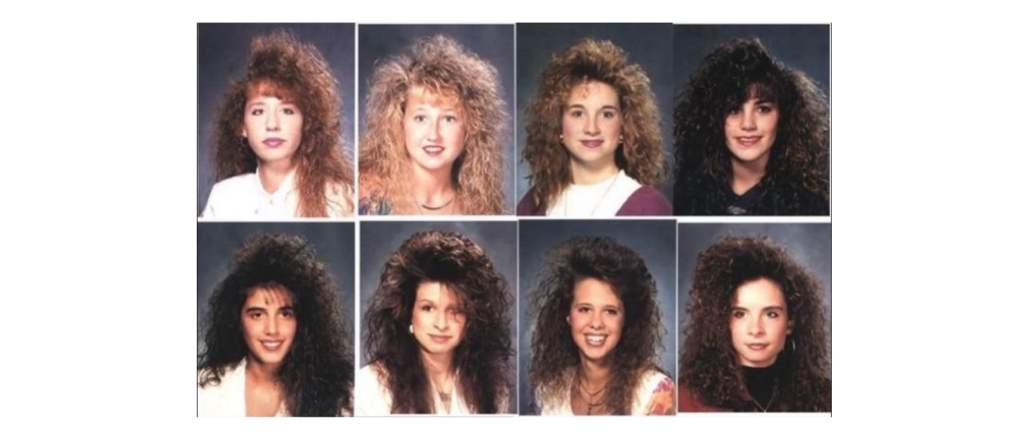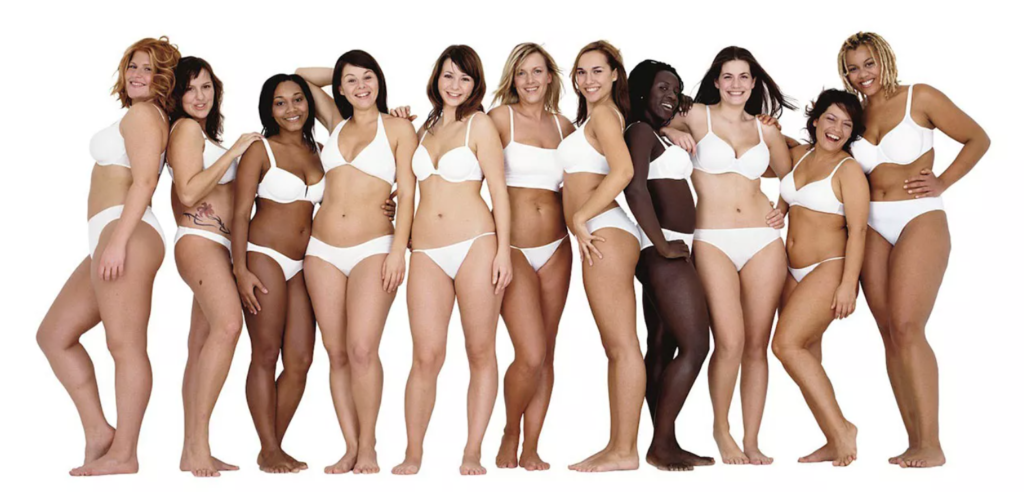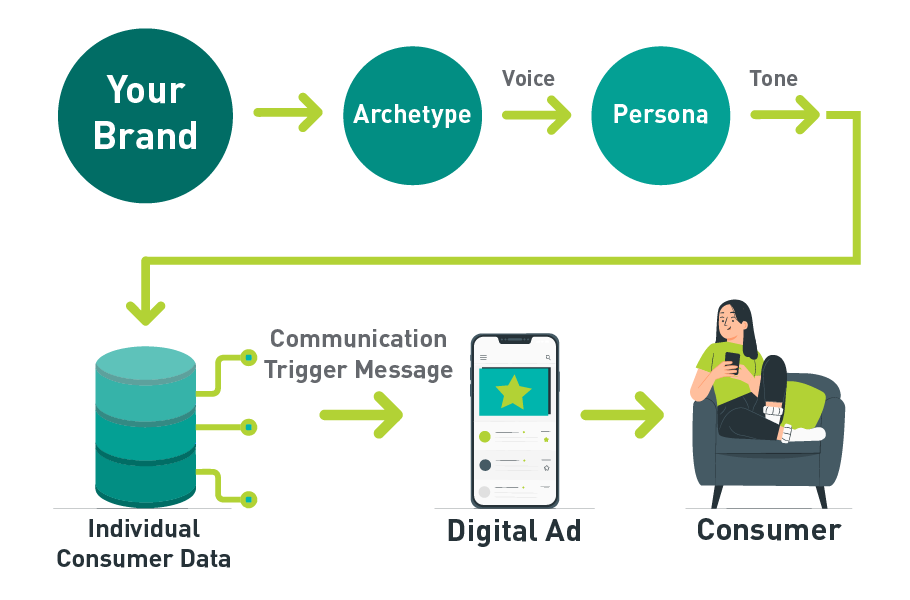In 1990, the Canon EOS Rebel camera ad featuring tennis star Andre Agassi boldly told us, “Image is Everything!” Back then, it certainly was something, but was image more important than it is today? You needn’t look any further than your friend’s and family’s social media pages to realize that the “ideal self” is still alive and kicking in 2022. In today’s edition of Plain Talk, we’ll juxtapose ad concepts that revolve around the concept of real self vs. ideal self and what we think that means to the future of brand relationships.
How we got here
Carl Rogers and Abraham Maslow pioneered a movement called humanistic psychology which reached its peak in the 1960s. As part of the movement, Rogers defined incongruence.
Incongruence is a humanistic psychological concept which suggests that unpleasant feelings can result from a discrepancy between our perceived (or “real”) and ideal selves. The perceived self is how an individual views themselves, and the ideal self is how an individual wishes they were. When these overlap, then congruence occurs. It is impossible for a person to be completely overlapped – we always have something about ourselves that we wish was different. Individuals seek congruence. When the distance between the perceived self and ideal self is too great, it is called incongruence, and it can lead to discomfort, anxiety, stress, and frustration.
 Rogers’ Self Theory. The shaded area represents the congruence between the Real-Self and the Ideal-Self.
Rogers’ Self Theory. The shaded area represents the congruence between the Real-Self and the Ideal-Self.
In the early 90s, advertisers often spoke to consumers through celebrity spokespeople. We told them to “Be like Mike!” or “Maybe she’s born with it, maybe it’s Maybelline.”
Unrealistic expectations that advertisers called “aspirational” were set and delivered along with compulsory jingles. Maybe that’s why yearbooks looked like this. Massive amounts of Aquanet® and White Rain® ate away the ozone layer at the poles as young women competed against Jon Bonjovi to create the biggest hair, all striving to achieve a single marketer-dictated definition of beauty and style!
Not having the feedback back then nor the technology to understand our consumers as individuals, marketers didn’t really have any other option but to set the ideals for popular culture and market them.
In our earlier article, Your Brand is Naked, we address the impact of technology on marketing from a brand perspective. Now let’s address it from a consumer perspective.
Inspiration from an unlikely place
In 1983, famed software designer Alan Cooper pioneered the concept of user personas. The concept became popular in the software development community. In 1994, Angus Jenkinson adopted the concept and applied it to brand-consumer segments, thus formalizing this technique in targeting customers and meeting them where they are. The concept has evolved data-wise to recognize clumping and other anomalies. Today, the persona is often referred to as an “avatar,” but there’s really no difference. Both involve creating a fictional character to represent a user type that might buy your product. Usually, brands create multiple personas to recognize the different clusters of customers that buy their products. While a persona doesn’t recognize a person as an individual, it does meet them a lot closer to their real self.
A hero is born … or an outlaw
Since personas changed the way we block consumers as collective individuals, it only seemed fitting that in 2001, Carol Pearson and Margaret Mark wrote the classic marketing book, The Hero and the Outlaw, to better recognize and define how a brand’s meaning resonates in the public’s collective heart and mind. In this book, the authors took a deep dive into another branch of psychology, Jungian psychology. Carl Jung borrowed the concept of archetypes from anthropology and defined them as “Images and themes that derive from the collective unconscious.” Archetypes have universal meanings across cultures and may appear in dreams, literature, art or religion. Building on Jung’s work and identifying archetypes, famed literature professor and historian of comparative mythologies Joseph Campbell identified the eight archetypes in literature as the hero, mentor, ally, herald, trickster, shapeshifter, guardian, and shadow.
Pearson and Mark then further identified 12 brand archetypes: The Innocent, The Everyman, The Hero, The Outlaw, The Explorer, The Creator, The Ruler, The Magician, The Lover, The Caregiver, The Jester, and The Sage. Even for brands that do not use classic archetypes, The Hero and The Outlaw forever changed how we think of brands – now as people rather than faceless companies or products.
When Dove® zagged
In 2004, Dove realized traditional model-driven aspirational marketing to the ideal self was causing anxiety. Their research showed only 2% of women considered themselves beautiful. So, while the rest of the beauty market continued marketing to unachievable perfection, Dove zagged. Through their “Real Beauty” campaign, they told the consumer to take a breath, drop their shoulders and relax. They told them something advertisers hadn’t ever told them – that they were beautiful as they were. The campaign launched a seismic shift from product-centric to consumer-centric marketing, and the industry took note when Dove sales increased from $2B to $4B in just three years! The campaign was an early beneficiary of the power of social media, and that continues today with their newest iteration, #DetoxYourFeed, where the brand has moms and their teenage daughters watch toxic beauty tips together that have been posted by influencers on their social feeds.
Social media and brand friends
Although the Supreme Court legally recognized companies as individuals years before, as discussed in a 2019 Medium article, it really wasn’t until 2013 that corporate brands (Denny’s first), primarily through social media, started acting like “people” and finding astonishing success relating to GenZ. By 2016, every major quick service restaurant (QSR) and hundreds of other brands had developed their own persona on social media through comments, jabs at one another, short humorous videos and reposted memes. Brands like Wendy’s were innocent and sweet, Arby’s was snarky, and apparently, Colonel Sanders was a bit of a heartthrob, albeit tongue-in-cheek.
And why not? Social media is where consumers get to project their best persona; why shouldn’t brands? How many of us know someone who looks like the parent of the year on social media, only to see through the veneer when we get close enough? Brands are acting this same way, only rather than projecting perfection, they are using social media to project humanness and authenticity. By taking on the characteristics of a flawed but likable person, they are meeting the consumer where the consumer is.
So, with everything described above, your brand defines its voice via its archetype and communicates relevant benefits using the right tone to each persona. While all of this is possible without digital media (e.g., you can run a print ad in a magazine a persona would likely read), everything targets out better with digital media and programmatic media buying.
The next wrinkle
This headline doesn’t refer to the new Dove ad or sugar daddy Colonel Sanders’s scented candles, but where we think branding is evolving. As digital marketers collectively brace for a cookieless world, there is increased pressure to better know our customers and maintain more first-person data on them. Direct conversations allow willing consumers to tell us all kinds of important nuances about their lives and for us to listen! Not only demographic details, intimate psychographic details about what makes them tick! In 2018, New Epsilon’s research indicated that 80% of consumers are more likely to make a purchase when brands offer personalized experiences.
The study goes further to state:
“Findings from the transactional analysis indicate that consumers who believe personalized experiences are very appealing are ten times more likely to be a brand’s most valuable customer – those that are expected to make more than 15 transactions in one year.”
Sales promotions teams have known this for years. They’ve been emailing birthday emails and coupons. They’ve sent Valentine’s and Mother’s Day promotions and blanketed moms (and dads) with back-to-school flyers!
What if the level of brand personalization that has evolved on social media to relate to Gen Z got a hold of consumer databases and, through artificial intelligence (AI), offered this level of humanness and individual connectivity to consumers? Could brands really become our friends?
According to Bustle.com, the qualities of a friend are:
- They’re trustworthy.
- They’re supportive.
- They accept you as you are.
- They actively listen.
- They’re emotionally available.
- They have similar interests.
- They show up during tough times.
- They’re reciprocal.
- They have your best interest in mind.
- They don’t just reach out when they need something.
- They’re loyal and help you out, no matter what.
- They understand the word “no.”
- They respect your differences.
- They honor your boundaries.
- They make you feel safe.
That’s a pretty tall order, but yes, brands can become “friends,” but we have to learn to know individuals better. Or, to put in the modern-day vernacular, through concerted effort and technology, we as marketers can help make the brands we market our consumers BFFLs (Best Friends for Life). But what would that look like?
BFFL branding
Let’s look at a few scenarios. A QSR knows Sandy is a single professional mother. She runs their app on her phone and orders family meals two or more times a month. They track that she’s at the office 30 minutes later than usual on a Thursday. This triggers them to send her a funny meme about the toils of being a working mom. In this interaction, they are not sending her a coupon or telling her about their sped-up drive-thru times. They’re just being a friend and acknowledging that her life is tough!
In another scenario, a beauty company sees Sally is turning 50 in a few weeks. They send her an article about how brands are starting to sign on a senior-aged starlet as their new spokespersons, with a pro-woman message.
A third scenario is Sam has started going to the gym regularly. He was a former active user of a fitness app. Because he has the app installed, the company has permission to follow him. He is served an inspirational ad about showing up being 90% of the battle, with a free 3-month upgrade subscription.
The ads are all built-in AI. The brand must be consistent with all in society for it to be authentic, so the archetype does not change. Creative executions and creative components are built for each persona to ensure relevance (an 80-year-old retired executive and a 23-year-old up-and-coming rapper buy a Lexus for entirely different reasons). By bucketing the creative components by persona, then assigning each targeted recipient to a persona, we can ensure manageability but still deliver relevant creative. How the creative is assembled, when it is sent, and which medium or combinations of media are used are all dynamically determined by AI through analysis of the individual’s first-person data.
The parameters of the system are to interact with the consumer like a friend. Sometimes that means acknowledging where they are. Sometimes that means pushing them to try something new. Because it is so intelligent, AI has the possibility of being perceived as pushy or intrusive. All touchpoints must be delivered with an understanding that people like to buy, not be sold. More importantly, there needs to be an emphasis on building and maintaining the relationship and not just selling. Per the definition of a friend, let’s look at how a brand can measure up:
- They’re trustworthy. (Much of this comes from the archetype and consistency in messaging.)
- They’re supportive. (This comes from the non-sales touches.)
- They accept you as you are. (Again – not selling, supporting.)
- They actively listen. (Using text, social media and instant messaging (IM) to listen and communicate – chatbot technologies are evolving.)
- They’re emotionally available. (This one is challenging, but through timely exchanges, it is achievable.)
- They have similar interests. (Since we’re targeting them and reaching to them through persona filtered messaging – we have the same interests.)
- They show up during tough times. (As we are permitted to track their whereabouts, we can reach out when we think they’re in need.)
- They’re reciprocal. (Active listening permits dialogue.)
- They have your best interest in mind. (Again, we’re not selling. We’re developing a relationship and being supportive.)
- They don’t just reach out when they need something. (We don’t sell; we support. Also, we’re here when they reach out. An interesting KPI could be how often the consumers initiate conversations with the brand)
- They’re loyal and help you out, no matter what. (By being part of their lives even when they aren’t buying, loyalty becomes second nature.)
- They understand the word “no.” (The word no can never be pushed back on – there is no place here for pushy.)
- They respect your differences. (There will be differences as the brand takes on predictable and perceivably authentic human qualities, including throughout the branding process. By being who the brand is, we will recognize the consumers.)
- They honor your boundaries. (Knowing the consumers as individuals will permit an understanding of boundaries.)
- They make you feel safe. (Taking on predictable and perceivably authentic human qualities will develop a higher level of perceived safety with consumers.)
In conclusion:
As technology evolves and social media permits and continues to encourage direct interactions with consumers, it’s only natural that the two merge and create more familial relationships between brands and consumers across all media. All the pieces necessary to assemble such a system are in existence today. Many are being assembled in B2B marketing, where the marketer is responsible for and accountable to fewer, more lucrative interactions. This is the essence of account-based marketing (ABM) from B2B applied to the B2C world. It’s happening. It will continue to happen. This is just our attempt to get ahead of it and help plan for it so that the brands we represent will be at the forefront. If you have any questions about any topics in this article or just want to nerd out, give us a call at (502) 499-4209 or contact us online, and we’ll be happy to help.

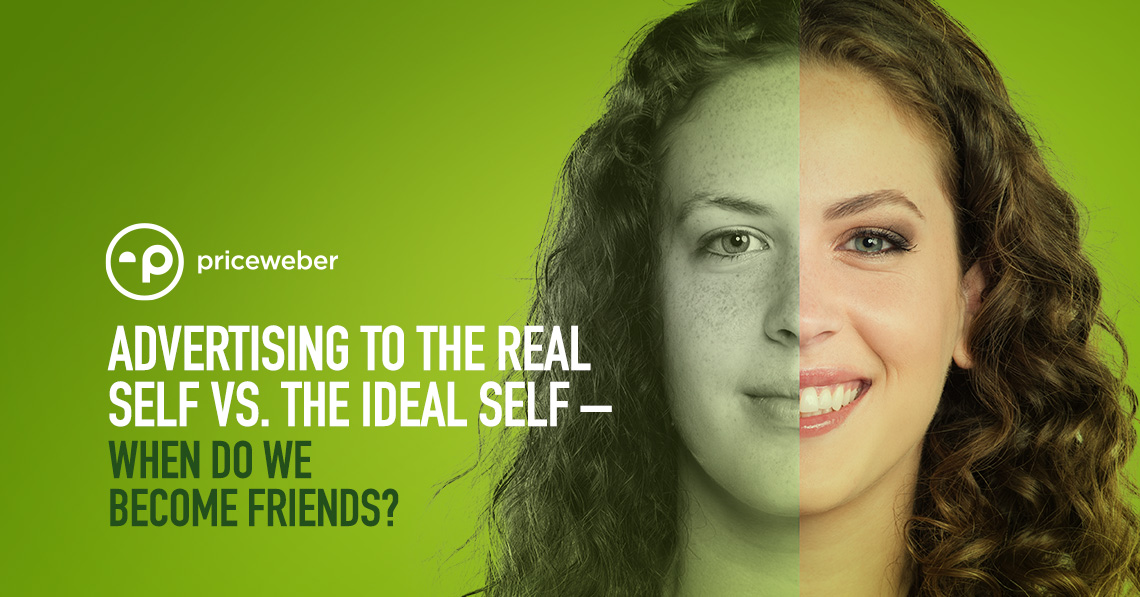

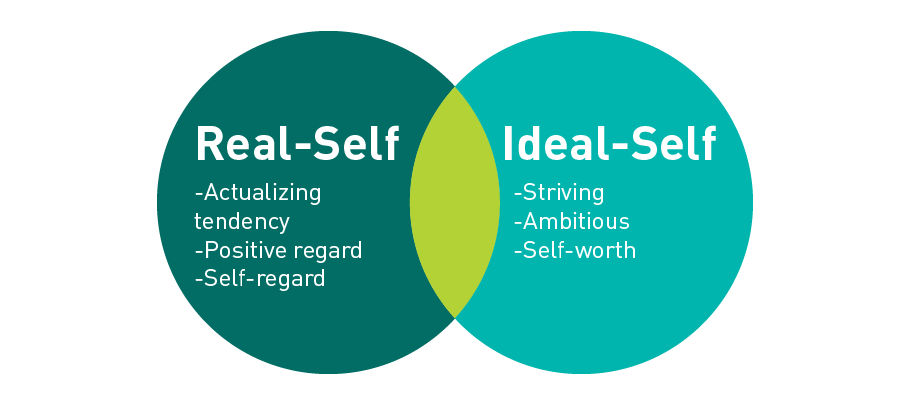 Rogers’ Self Theory. The shaded area represents the congruence between the Real-Self and the Ideal-Self.
Rogers’ Self Theory. The shaded area represents the congruence between the Real-Self and the Ideal-Self.